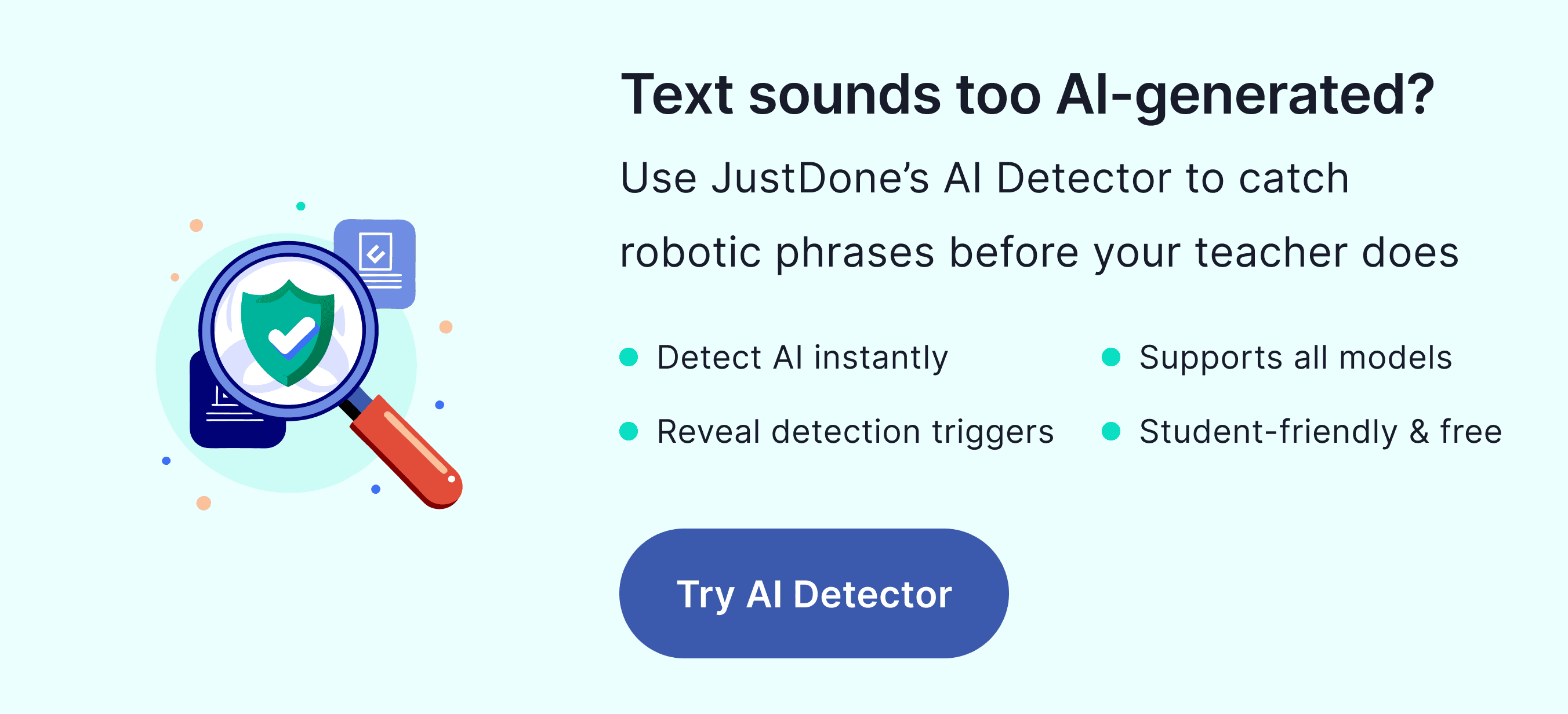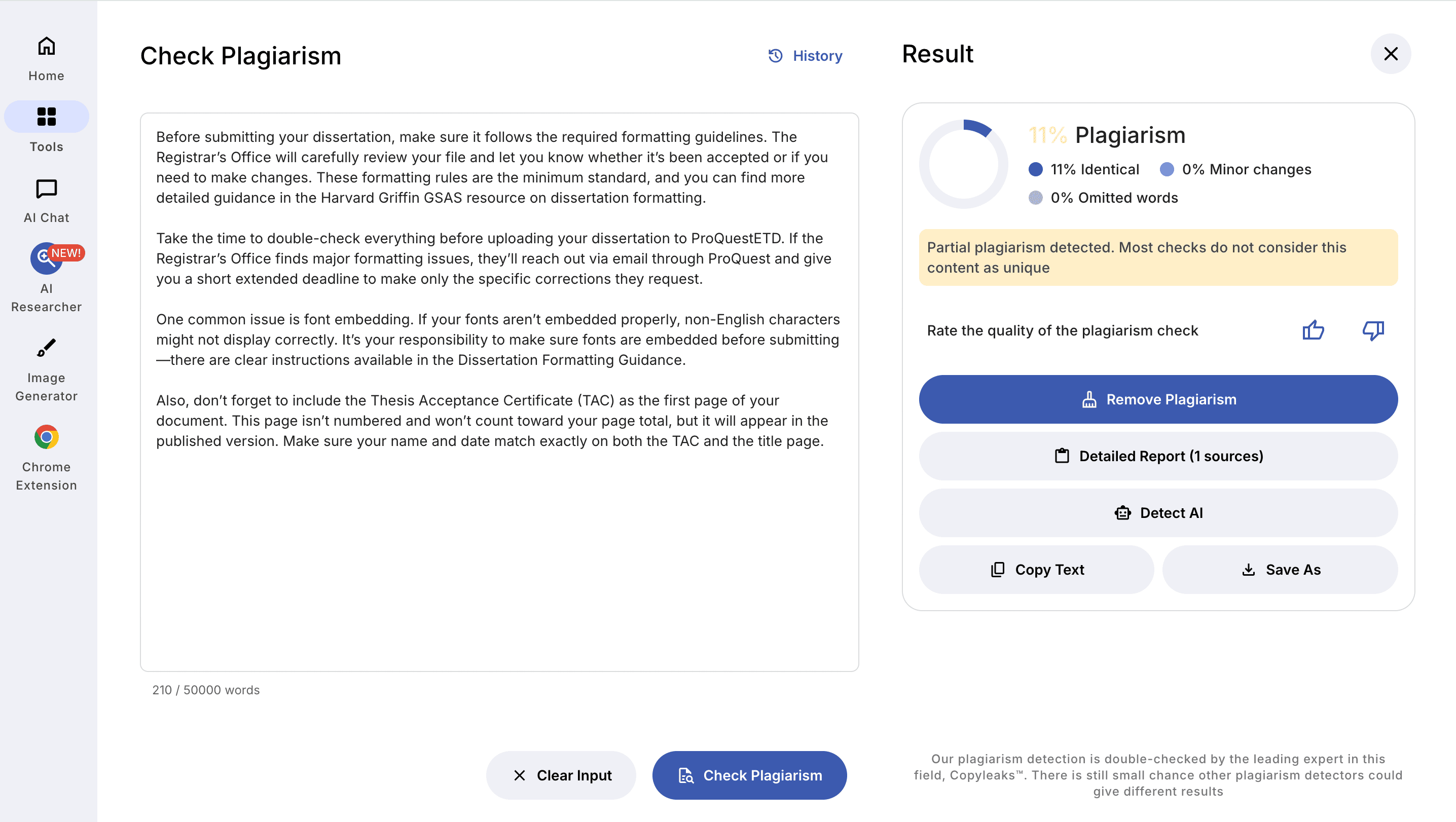Can AI detector replace an AI plagiarism checker, or vice versa? They sound similar and are often treated as the same thing. But they’re not. Understanding the difference between the two tools is important because it can directly affect whether your paper gets accepted, whether you pass a class, or whether you get flagged for academic dishonesty.
I’ve worked with learners who used one tool when they really needed the other. Some were caught off guard when a piece of work flagged “OK” in one checker came back as problematic in another. That’s why the debate over plagiarism checker vs AI detector is more important than ever.
What an AI Detector Actually Does
An AI detector checks whether a text was written by a human or generated by AI. It doesn’t compare your work to other documents in a database. Instead, it looks for patterns: sentence length, overly consistent structure, word choice, and predictability in phrases. These patterns are common in ChatGPT writing but not as common in human work.

For example, one of my students wrote a technical essay: everything was written manually but then heavily edited by ChatGPT. After running it through a plagiarism checker, it came back clean. But when checking by AI detector, it flagged 78% AI-generated. That’s because the tone, sentence style, and word choice all matched the patterns that detectors are trained to spot.
With JustDone’s AI Detector, the process is tuned for academic needs. It’s not just a “yes or no” verdict. It gives you a breakdown so you can understand why something might be flagged as AI-written. That kind of insight is especially important when you’re working on essays, research papers, or other scholarship applications. It’s also a vital step if you’re learning how to bypass AI detection without compromising the quality of your work.
AI Plagiarism Checker in Academic Work
While an AI detector focuses on authorship patterns, a plagiarism checker compares your text against existing content. It scans online sources, academic databases, publications, and sometimes proprietary archives to see if your work matches or closely resembles other work.
In other words, the plagiarism checker’s concern isn’t whether a human or AI wrote it, but whether the content itself already exists elsewhere. This means you could write something by hand and still get flagged. It happens when you accidentally reuse too much of a source’s wording or structure without proper citation.

I remember reviewing a research paper for a postgraduate student. He didn't use AI, but the plagiarism checker flagged 35% similarity because of long excerpts from several studies without quotation marks. The AI detector would have had no problem with that text, but the plagiarism checker identified a citation issue immediately. If you’re unsure what counts as safe territory, it’s worth knowing what percentage of plagiarism is acceptable in your academic field.
In short, scores under 10-15% are usually considered acceptable.
Plagiarism Checker vs AI Detector: Don't Confuse the Two
It's a big mistake to think that passing an AI detector means your work is plagiarism-free. Also, passing a plagiarism check doesn't mean it won’t be flagged as AI-generated. The reality is that these are separate issues. You could pass one and fail the other.
For example, imagine you use ChatGPT, Claude, or Gemini to draft a paper. Then, you paraphrase it heavily to pass an AI detector. You submit the paper, confident it’s safe. But your plagiarism checker report shows a high match rate because the AI text closely followed an online source. You didn’t realize it was in the model’s training data.
Or reverse the scenario: you write something completely original, cite all your sources, and pass a plagiarism check successfully. The problem could be in your AI writing assistant that you used for sentence rewrites. After that, your text ends up flagged by the AI detector as synthetic.

Talking about plagiarism checker vs AI detector, it’s not about choosing one over the other. Know which to use for which problem, and use both for more confidence.
How JustDone’s Tools Can Help
For academic work, pairing the right tools is the smartest move. JustDone’s AI Detector is best for educational contexts. It gives you feedback so you can act on. If it flags something, you can take that exact section and run it through the JustDone Humanizer. It will rewrite the piece in a natural, human tone while keeping your meaning the same.
If you’ve never humanized AI text before, check out our guide on how to humanize AI content.
Once that’s done, you can run your paper through a built-in plagiarism checker. You will be sure that in fixing one problem, you haven't created another. In fact, it means synergy inside the tool, because you can detect AI, humanize your text, and ensure originality at once.
I’ve helped students prepare final thesis drafts this way. They’d use the AI detector to identify risky sections, run those sections through the humanizer, then check the revised paper for plagiarism. The result wasn’t just compliant; it also sounded more personal, more like the student’s own academic voice.
Academic Example of Using Both Tools Together
One of the clearest examples happened last semester. A student was preparing a comparative literature paper. She’d used AI brainstorming tools to organize their outline and draft a few sections. The ideas were good, but the AI detector flagged 99% of the text as AI-generated.

We took that flagged portion and ran it through JustDone’s Humanizer. The output kept the same academic argument but varied the sentence structures, adjusted the vocabulary, and added a more natural flow. Running the revised section back through the AI detector dropped the score to 0%.

Next, we ran the whole paper through a plagiarism checker. It flagged two paragraphs with high similarity to an online essay database. The student went back and paraphrased those parts. The result was 0% plagiarism.

If you need to work on this skill, our breakdown of the difference between paraphraser and humanizer explains when each is the better choice. The final paper passed both checks.
Choosing Between a Plagiarism Checker vs AI Detector
If your concern is whether your text is too close to existing material (whether from published research, articles, or online sources), then you need a plagiarism checker. This is essential for protecting academic integrity and ensuring you’re not unintentionally presenting someone else’s work as your own.
If your concern is whether your text will be identified as machine-written (even if it’s original), then you need an AI detector. This is especially important in institutions that have policies against AI-generated submissions, even when the content isn’t plagiarized.
In practice, many students benefit from both. In fact, I recommend running work through an AI detector first if you’ve used any AI assistance, then using a plagiarism checker to verify originality after humanizing any flagged sections.
Why Pairing Detection with Humanizing Works Best
One of the reasons JustDone’s Humanizer is so effective is that it addresses the core of what AI detectors flag: repetitive patterns, overly uniform syntax, and certain lexical choices. It doesn’t just swap synonyms like a basic paraphraser. It adjusts pacing, adds variation, and introduces more human-like quirks into the writing.
That’s why pairing detection with humanizing is such a strong strategy. You’re not just trying to “trick” a system; you’re improving the quality and authenticity of your work. It’s like having a professor read your draft and suggest ways to make it sound more like you, except it’s instant, and you can apply it to as much of your text as you want.
Final Thoughts on Plagiarism Checker vs AI Detector
Understanding the difference between a plagiarism checker vs AI detector is about more than passing software checks. It’s about knowing the unique risks to your work and addressing them proactively. A plagiarism checker protects you from unoriginal content. An AI detector protects you from being flagged for authorship issues.
In the current academic climate, both matter. And with tools like JustDone’s AI Detector and Humanizer, you can tackle both sides of the problem without guesswork. Detect the AI-like sections, humanize them for authenticity, then verify your originality.